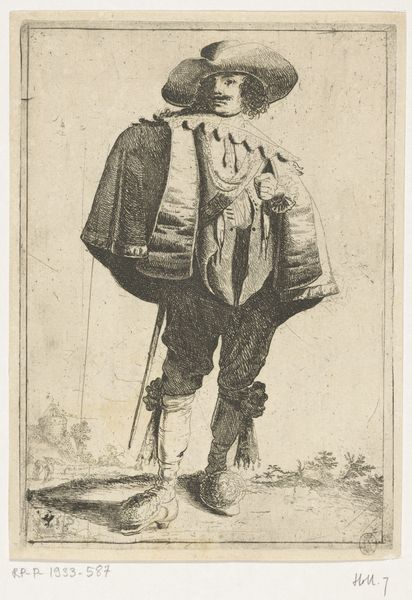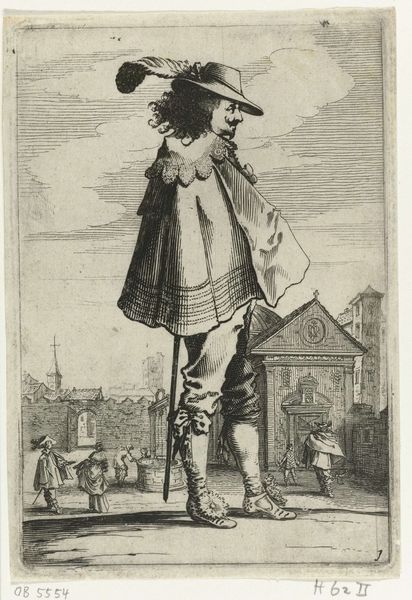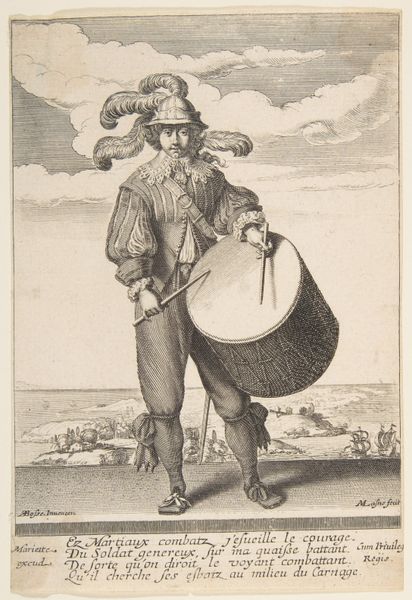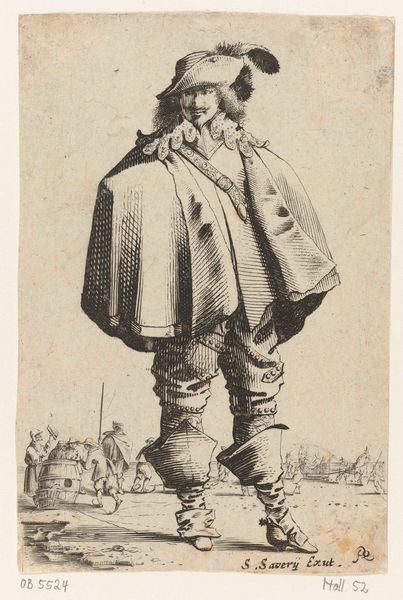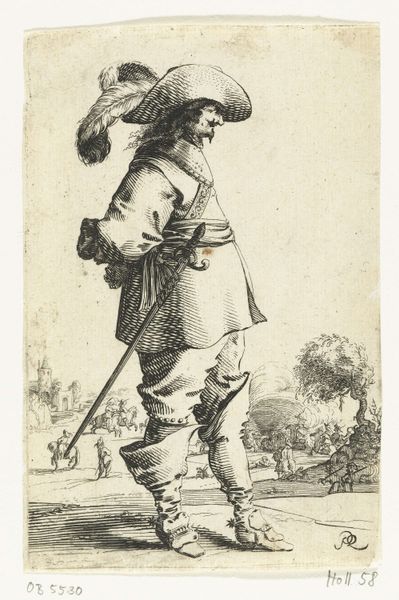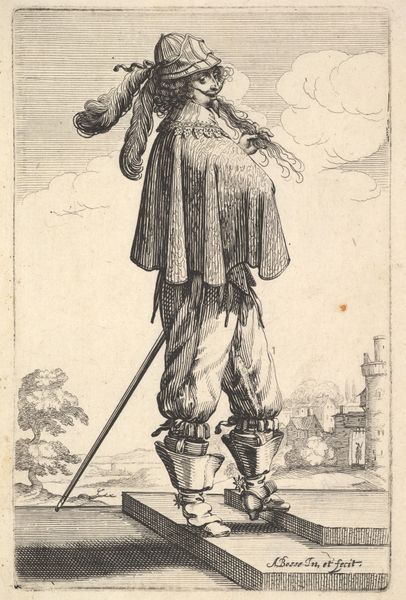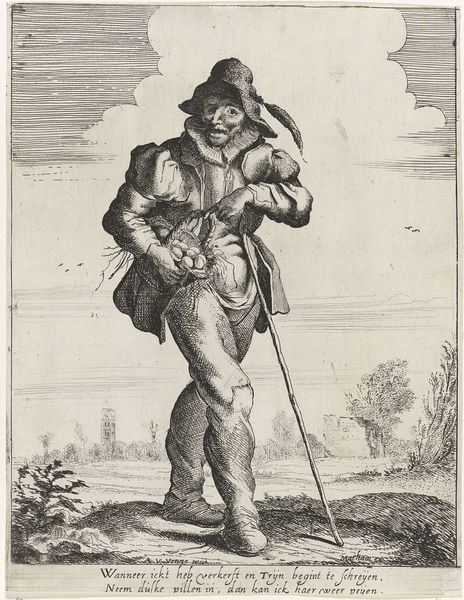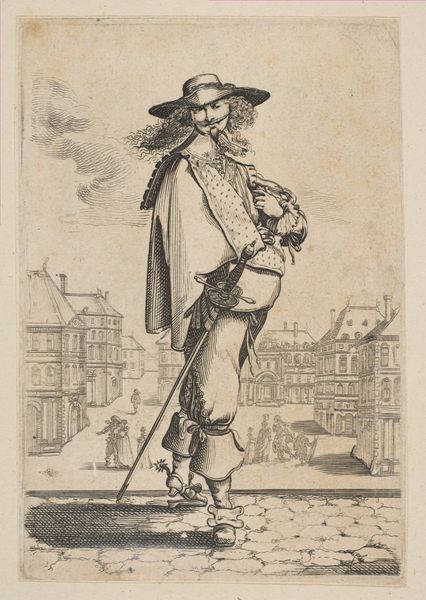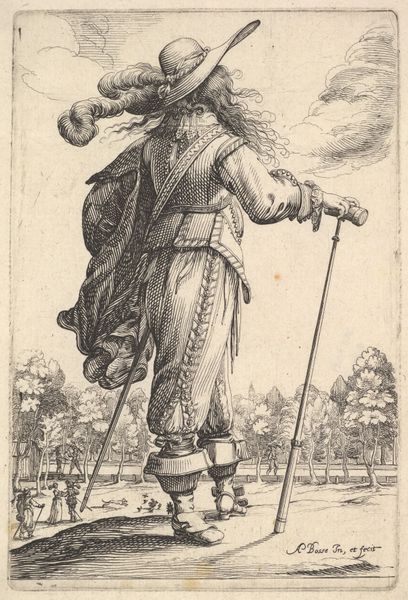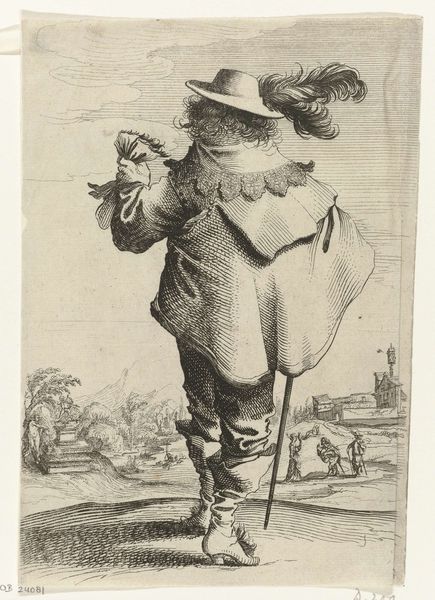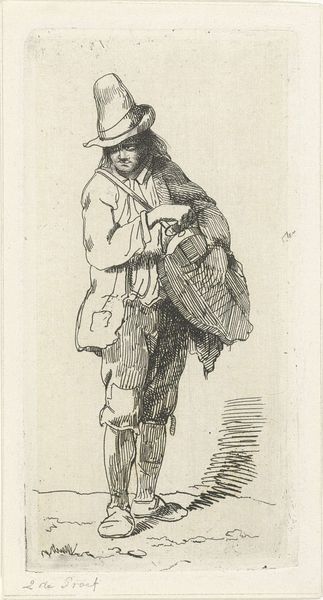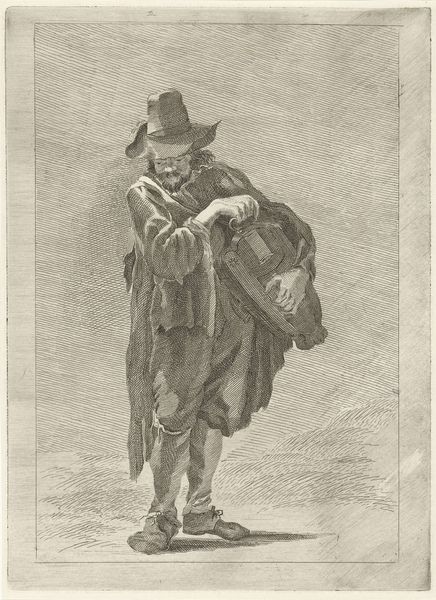
print, engraving
#
portrait
#
baroque
# print
#
figuration
#
line
#
genre-painting
#
engraving
Dimensions: height 190 mm, width 132 mm
Copyright: Rijks Museum: Open Domain
Editor: Here we have "Standing Man in Costume," a print dating from 1623 to 1653, by Pieter Nolpe, currently housed at the Rijksmuseum. The detail is incredible! What do you see when you look at this print? Curator: Immediately, the intricate use of line seizes my attention. Notice how Nolpe employs varying densities of hatching and cross-hatching to create tonal variation and simulate texture. Observe the meticulous detail rendered in the man's attire – the ruff, the ribbons, the brocade. How does this level of detail inform your perception? Editor: I think the texture of the clothing feels very real. The varying thickness of lines and small, dense hatching pattern really work well together. I'm also struck by his pose, quite bold. What does this reveal in relationship to the overall composition of the print? Curator: The pose is intrinsically connected to the composition. His stance, combined with the low horizon line, creates a sense of dominance and presence. Semiotically, the figure's placement and scale denote status and self-assurance, in juxtaposition to the subtle background that adds context. This brings me to inquire; do you notice any subtle differences between his garment and facial details in the rendering that may influence or alter how we see him? Editor: I do! Now that you mention it, there does seem to be a bit more attention to detail on his attire than the background; so that tells me that he holds most importance, but less focus to his face may lead us to believe that while his dress holds great relevance, his physical likeness is not necessarily the focus. His status in society might be very relevant, too! Thank you for helping me analyze it in a way I never have! Curator: It is a dialogue through which our perception of the image’s form is elevated; considering elements such as line, composition and tonal arrangement leads us to engage more deeply with this particular print and artwork more broadly.
Comments
No comments
Be the first to comment and join the conversation on the ultimate creative platform.
